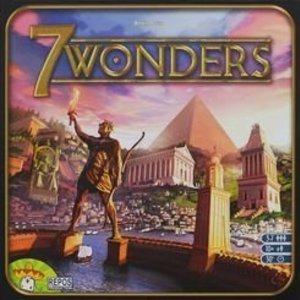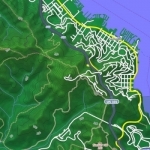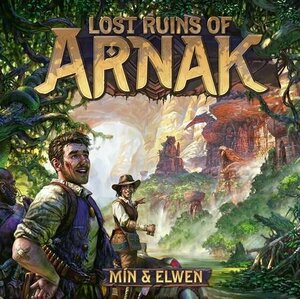
The Greedy Cave
Games and Entertainment
App
In a land far, far away there once was a vast continent called Milton. It was a land where the power...

Discographic for Discogs
Music and Reference
App
Discographic is the best and most complete Discogs app currently available. Look what Discographic...

Showa Candy Shop 2
Games
App
Back by popular demand! The sequel to Showa Candy Shop! Experience nostalgia with a Japanese twist...

PAW Patrol: Air & Sea
Education and Games
App
Pups Take Flight is now PAW Patrol Air and Sea Adventures! Kids take to the sky and sea with the PAW...

PAW Patrol: Air & Sea HD
Education and Games
App
Pups Take Flight is now PAW Patrol Air and Sea Adventures! Kids take to the sky and sea with the PAW...

Photography Week: the weekly digital camera mag
Photo & Video and Magazines & Newspapers
App
***FREE 30-DAY SUBSCRIPTION TRIAL – GET OUR LATEST ISSUE FREE TODAY!*** Photography Week is a new...

Survive - Wilderness Survival
Entertainment and Games
App
Wilderness survival simulation game. Travel to safety. NOTICE: Version 319 has bug that can...

7 Wonders
Tabletop Game Watch
You are the leader of one of the 7 great cities of the Ancient World. Gather resources, develop...
BoardGames
Purple Phoenix Games (2266 KP) rated Lost Ruins of Arnak in Tabletop Games
Feb 7, 2021
Players, or “archaeologists” as the game coins them, will have only 5 rounds to explore as much of the board as possible, which includes a hidden temple as well as the jungle proper. At the end of the 5 rounds, players will add up all victory points they have obtained from the temple, any treasure they have left, points on any cards collected, and guardians they have overcome.
“Lost Ruins of Arnak” takes place on, well… Arnak. It’s a fictional jungle that is teeming with wild animals and guardians which keep watch over various treasures all over the expansive island, from here forward referred to as the giant game board. These guardians appear when you explore a new jungle tile for the first time. They attack only if you stay in the location longer than a turn OR if you return to the location on a subsequent turn. If you eliminate a guardian, they provide a couple victory points towards your overall total at the end of the game, and a slight bonus when collecting artifacts from other locations later. Being attacked by a guardian isn’t the end of the world, but can have detrimental effects on your personal deck of cards if you fail to overcome a guardian too many times.
While in the jungle, you may place a single meeple, or “archaeologist” on your turn to discover a new area, or visit a previously discovered one. These new areas contain a guardian and some sort of gold amount or trinket (idols, artifacts, or jewels). These items can be used to push your token further through the hidden temple (see below) OR to purchase cards to improve your play deck going forward. While navigating this mysterious jungle can seem exciting at first glance, you have to be careful not to let your gold fever take over, as it may leave you with minimal points by not using some worker placement to explore the mysterious temple ruins further.
While the jungle takes up a majority of the board, there is a temple which players navigate through simultaneously on the right hand side of the giant board. While it isn’t as visually appealing as the jungle portion of the board, it serves by far the highest purpose by scoring victory points. As your token travels through this temple, more and more treasure (victory points) await. It is not suggested in the rulebook, but should be noted that failing to spend ample treasure to work your way through the temple is almost a sure-fire means of not having a chance to win the game. The mechanic of exploring the temple is unique, but can be costly in terms of managing your resources properly. In my opinion, this takes away from the luster of traversing through a hidden temple and finding as much fat loots as possible. Rather, it feels like another board game I own, where you are furiously chucking dice just trying to get through with no time to look around.
The final mechanic of the game, which, as I read reviews myself prior to purchase, thought would be more prominent, is the deck building mechanic. You are provided a few cards at the start, which is similar to most any deckbuilding game. These basic cards are your first few resources to use for traveling around the board OR for their monetary value in either gold or scrolls. Using the cards for travel allow you to explore different levels of the jungle on the game board. The lower areas of the board require less travel points, while the more lucrative spaces higher up in the jungle require more. To get more travel points, you will need better cards from the decks provided. By using your gold, also an aspect of each card, you may purchase stronger cards from the supply. So, there is a balance you must find between using your cards for travel or for purchases each turn. This can be very limiting with only having the 5 rounds in which to play.
My final thoughts: I am a total sucker for pretty much anything that says the words “deck building” on them, and this game was no exception. I went into this game thinking there was going to be this new way of using a deck building mechanic to also explore a really well crafted game board. I could not have been more wrong. The deck building aspect got so lost in the other mechanics, that I felt like I rarely had the opportunity to actually build my deck. After 3-4 plays of this game, with varying player counts from 2-4, I always ended up with a deck no bigger than about 15-20 cards. When I think deck build, I think of those powerhouses like Marvel Legendary, Ascension, or Star Realms where you are really transforming your deck into a large deck by the end. On top of that, most highly regarded deck builders require you to strategize somewhat in which cards that you buy to compliment your current deck further. Arnak completely leaves both of these elements out. Most times I found myself only able to purchase 1 card in the supply due to lack of resources that I did not have any choice in how that card would compliment my deck or not. It was merely just collecting a card to try and give my deck any sort of a distinct advantage going forward. Now, don’t get me wrong, like the game board, the artwork on the cards is stunning. By far this saves the poor mechanism of the actual cards themselves.
To me, the amount of mechanisms in the game is what gets in its own way. Its that classic, everything but the kitchen sink expression. The exploration gets in the way of the deck-building, which gets in the way of the worker placement, which gets in the way of the resource management. When I found myself wanting to build my deck, it was more crucial that I move up the temple one step. When I wanted to move up the temple, I was missing a certain idol, so I had to resort to wasting cards for gold to purchase a card for my deck that I really didn’t want. So while I think the premise is really thrilling for what this game could have been, in my opinion it just fell short. I left me wanting to explore the upper part of the jungle I never got to. I left me wanting to look at more of the artwork on the cards I never was able to purchase. In the end, I made it to the top of the temple. I couldn’t wait to enjoy my heaping pile of fat loots that awaited my studded archaeologist. However, once I turned over the treasure token, I only acquired another measly 12 victory points. This feeling left me wanting more from this game that was so hyped for its gameplay. I no longer felt like Indiana Jones, and more like I was in a bad B movie hoping for a better acting career.

